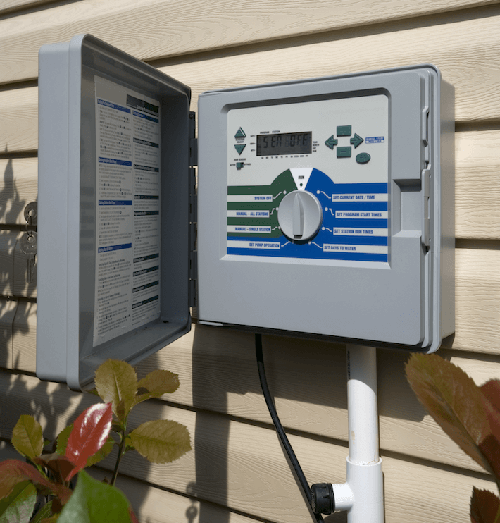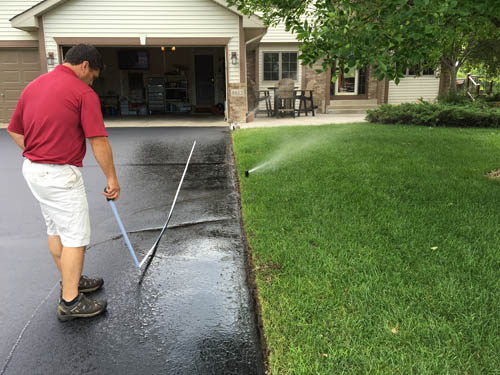
Property owners in 19 communities across the region are saving an estimated 52 million gallons of water annually, thanks to the Council’s Water Efficiency Grant Program.
In fall 2015, the Council invited communities that manage municipal water systems to apply for a grant to provide rebates to homeowners and commercial property owners. The rebates were an incentive to replace older, less efficient washing machines, toilets and irrigation controllers with Energy Star clothes washers and EPA WaterSense-labeled toilets and smart irrigation controllers.
Under the program, a total of 4,510 devices were replaced:
-
2,380 toilets, saving a total of 29.8 million gallons of water annually
-
1,190 irrigation controllers, saving 18 million gallons of water annually
-
940 clothes washers, saving 4.2 million gallons of water annually
 “For growing communities, investing in water efficiency is smart because it can help save millions of dollars in future costs for drilling new wells,” said Senior Engineer Brian Davis, of the Council’s Water Supply Planning unit. “Our program also helps raise awareness of the importance of water efficiency and the options available for more efficient appliances.”
“For growing communities, investing in water efficiency is smart because it can help save millions of dollars in future costs for drilling new wells,” said Senior Engineer Brian Davis, of the Council’s Water Supply Planning unit. “Our program also helps raise awareness of the importance of water efficiency and the options available for more efficient appliances.”
The program was funded with $500,000 from the Minnesota Clean Water, Land and Legacy Amendment. The Council awarded grants on a competitive basis. The grants covered 75% of program costs; each municipality was required to provide 25% as a match. Each community could decide which of the three kinds of devices to provide rebates for and how large the rebates would be. Providing rebates for irrigation audits was also an option, though only one community chose to do that.
New Brighton focuses on water-consuming apartments
The City of New Brighton focused its efforts on apartment buildings that had a history of high water use when compared to their peers, said Craig Schlichting, Director of Community Assets and Development for the city. At one large apartment complex, the city worked with the property owner to purchase and install 202 WaterSense toilets.
At the time the city applied for a grant, it was limited to using its Mount Simon Hinckley (deep) wells. Officials were concerned about demand possibly exceeding supply, especially during summer months.
“We took appropriate steps with odd-even watering bans and we were prepared to further restrict sprinkling if wells required maintenance or demand continued to rise,” he said. “By applying for the grant we saw an opportunity to reduce our use by eliminating running water between flushes, and overall less water used per flush.”
After one year, water use at the apartment complex dropped by more than 6.1 million gallons compared with the average of the three previous years. That equates to $17,130 in reduced costs. Based on that success, they chose two more apartment owners to work with. After six months, those property owners are already seeing the benefit of reduced consumption and lower water fees, Schlichting said.
“Quite simply, water is too valuable to send straight down the drain,” he said.
For Plymouth, biggest savings came from irrigation controllers
 The City of Plymouth used $25,250 in Council grants and $8,420 in local matching funds to offer rebates that helped replace toilets, washing machines and irrigation controllers. A total of 380 devices were installed, reaping a water savings of 7.6 millon gallons per year. The estimated annual water savings per device was:
The City of Plymouth used $25,250 in Council grants and $8,420 in local matching funds to offer rebates that helped replace toilets, washing machines and irrigation controllers. A total of 380 devices were installed, reaping a water savings of 7.6 millon gallons per year. The estimated annual water savings per device was:
-
5,150 gallons for an Energy Star washing machine
-
7,017 gallons for a WaterSense toilet
-
69,286 gallons for a WaterSense irrigation controller
Water use in Plymouth can go from just over 150 million gallons per month in February to nearly 450 million gallons per month in July and August, reported Senior Engineering Technician Ben Scharenbroich. While irrigation controller replacement accounted for 21% of the devices receiving rebates under Plymouth’s program, it accounted for 75% of the estimated annual water savings.
If a new grant program is authorized, Plymouth plans to apply all its rebate funds to irrigation controllers, Sharenbroich said.
Davis said the Council plans to apply for Legacy money in 2018 in hopes of renewing the grant program in the current biennium.
More information